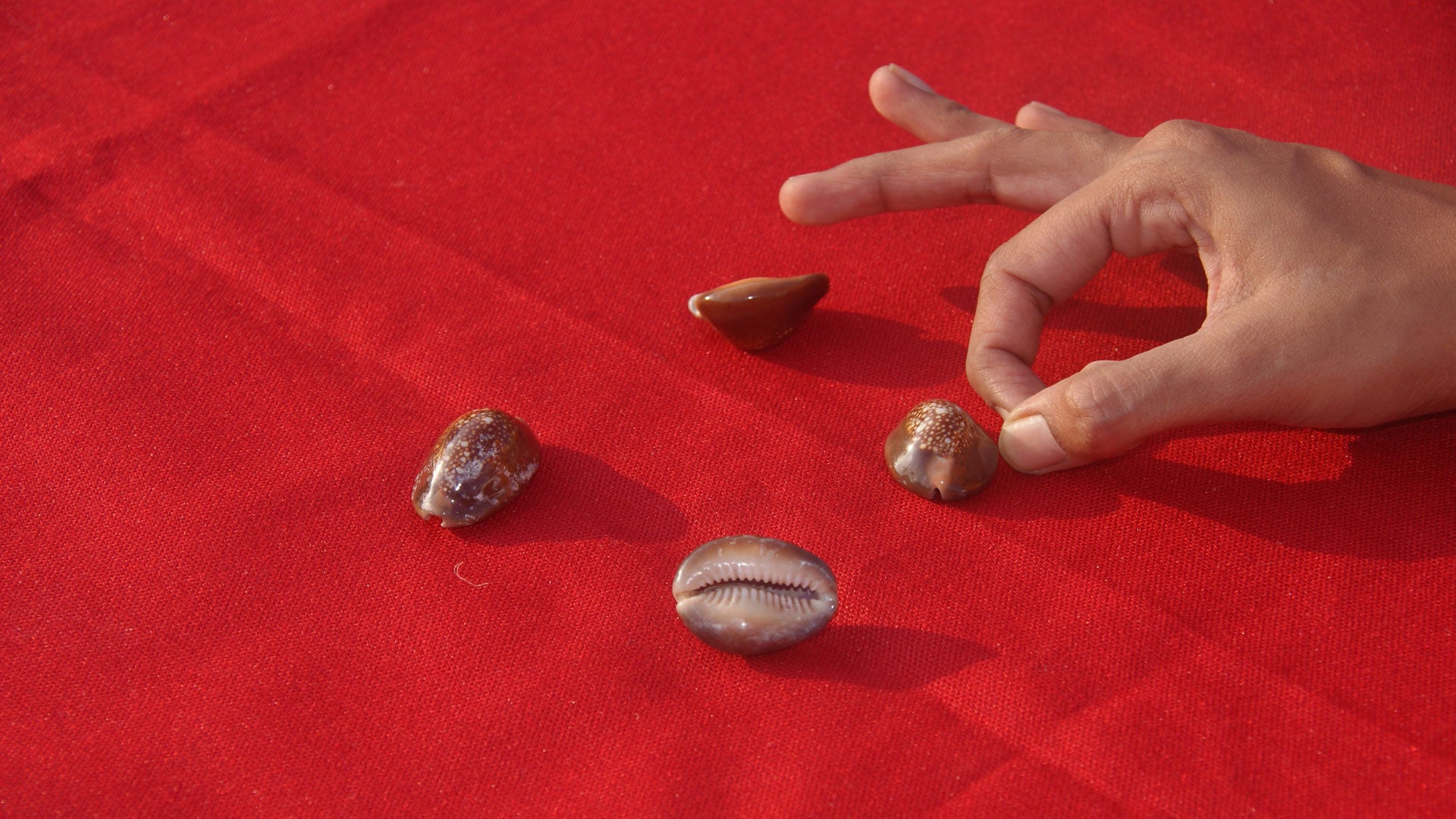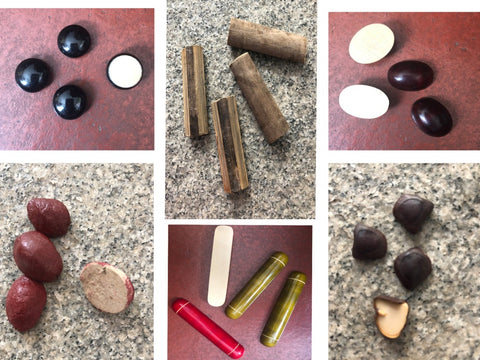
PRESERVING BIODIVERSITY- ALTERNATIVES FOR COWRIE SHELLS
Since time immemorial, people have played games, and dice or throw pieces were often an integral part of the game. Dice are small throwable objects that rest in different positions and help us generate random numbers that define the flow of the game. Dice have been used since before recorded history, and it is uncertain when they originated but there are mentions of dice even in the Vedas.
While many of are familiar with square dice marked by 1 – 6, long dice are also very popular in India. The original randomizing objects used by ancient people dating from pre-history were sets of two-sided flat sticks, flat sea-shells, nut-shells, pebbles, etc. Technically any two-faced flat shape, like an ordinary coin, is a kind of dice.
Perhaps the most popular of these are the cowrie shells. A cowrie is a marine mollusc that has a smooth, glossy, domed shell with a long narrow opening, typically brightly patterned and popular with collectors. In ancient times cowries were even used as currency.
Many traditional games used cowries as throw pieces and in the interest of authenticity, Kreeda introduced its games with cowries too. However, a mail to Kreeda in January 2005 made us sit up and take notice:
I have seen some of your games and the efforts you are making to be as ecological as possible. Congrats. As part of this I would like to draw your attention to the cowries you use as dice and counters. Cowries are actually animals (living molluscs) that are harvested, killed, and then sold for their shell value. Their population numbers are dropping steadily. They are a vital part of the coral reef ecosystems of the world. In our work in the Andaman and Nicobar Islands and Lakshadweep, we have actively sought to ban cowrie collection and use. I am sure you will agree that it is a wise thing to replace them with some other sustainable products…
And so began a journey for us. Cowries were beautiful, had the right weight and heft, the right price, a long shelf life and beyond all else a certain probability factor that influenced the game. What could we find that would substitute for it?
We tried many things. We went back to the traditional throw pieces. We cut up tamarind seeds in half. They were too light, too small, hard to cut and did not look very appealing. We cut bamboo into two halves. They did not look great, had hard sharp edges although they were a good size and weight.
Every time we tried anything new, one of our colleagues in the office would throw them a thousand times and record the numbers just so our probabilities were right.
We tried buttons of different kinds. They were too light and did not throw very well. We even tried coffee beans. They smelt great but were too small.
Soon we thought we had a solution with shell shaped pieces made of paper powder. They looked good, were the right price and felt good. We thought we had a winner, but as we played, they started to look old. And more important it became really hard to make them as they took days to dry.
Finally, we hit on an idea. We reached out to our artisans at Channa Patna and requested them to create customised pieces for us that looked like cowries but were hand made with wood.
Now we had a winner. We had lovely throw pieces that were the right price, right weight and heft, and had a long shelf life.
It has been a long journey for Kreeda, with many trials and errors. We not only had to find the right substitute, but also convince our customers about the cowries. Today we are proud to have some wonderful games that are played with these throw pieces. At the same time we believe that we are doing our little bit to protect the bio-diversity of marine life and preserve our oceans.

0 Comments
